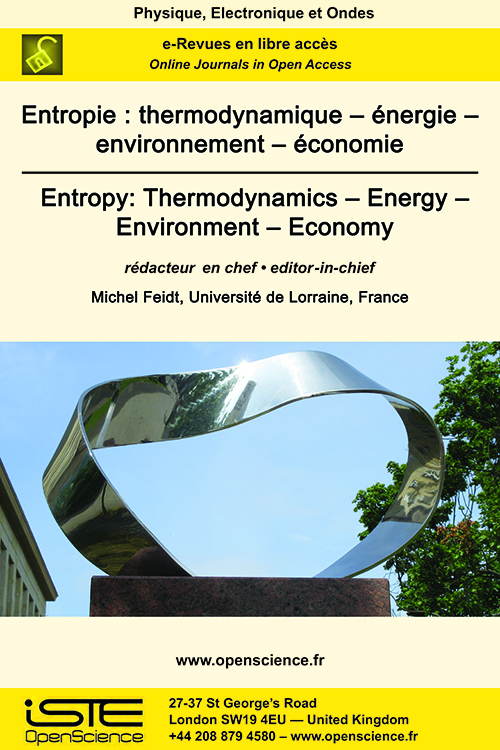

Physics > Home > Entropy: Thermodynamics – Energy – Environment – Economy > Issue
Chaque année, la Société Française de Thermique organise un congrès qui permet à tous les chercheurs, industriels et doctorants d’échanger sur leurs dernières préoccupations et de présenter leurs travaux les plus récents dans le domaine de la thermique et de ses applications. Après deux années difficiles compte tenu de la situation exceptionnelle causée par l’épidémie de Coronavirus (Covid 19), le 30ème Congrès Français de Thermique a pu à nouveau se tenir en présentiel du 31 mai au 3 juin 2022 à Valenciennes sur le thème de « La Thermique au service de la Transition Energétique ».
It is very well-known that the PV efficiency drops when the PV temperature increases. The development of a numerical model of the energy balance of the panel is used to estimate its temperature by integrating the climatic parameters over time. This balance is interpreted in a probabilistic way by the Monte Carlo method and gives access to the estimation of the system temperature at any probe point. This estimation is validated using experimental data. Then the model is used to determine the electrical production over a month of a 310 W photovoltaic panel.instructions put together below fall into four categories.
In order to determine the heat capacity and thermal conductivities of a Li-ion battery, this study presents a characterization method based on thermal impedance spectroscopy. By calibrating a nodal model, this non-destructive approach allows to estimate the thermal parameters of the cell at 20 °C for different states of charge.
We want to estimate the outgoing Earth’s radiative flux integrated over the thermal infrared, over the entire surface of the globe and over a long climatic period. This calculation is known to be very difficult to achieve without simplifications of the frequency, spatial or temporal description (e.g. switching from a line-by-line model to a band model, using a coarser temporal discretization, etc). We show that the Monte-Carlo method can avoid these simplifications if we combine the following two ideas : introduce fictitious colliders to allow ray tracing without knowledge of the extinction coefficient field and statistically sample the spectral lines. We show that it is not more expensive to perform this integration over a day or a month, over an atmospheric column or over the whole Earth, or finally over a narrow frequency band or over the whole infrared spectrum.

2024
Volume 24- 5
Special issue IEES2023
Volume 23- 4
Issue 12022
Volume 22- 3
Issue 12021
Volume 21- 2
Issue 12020
Volume 20- 1
Issue 1